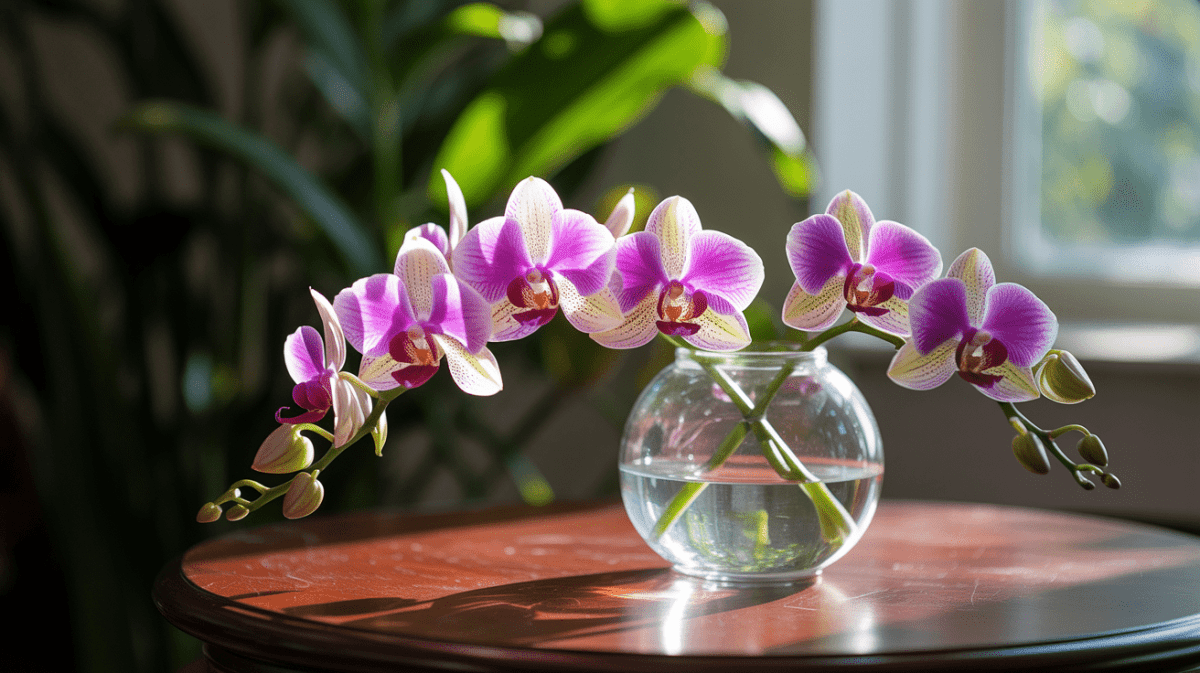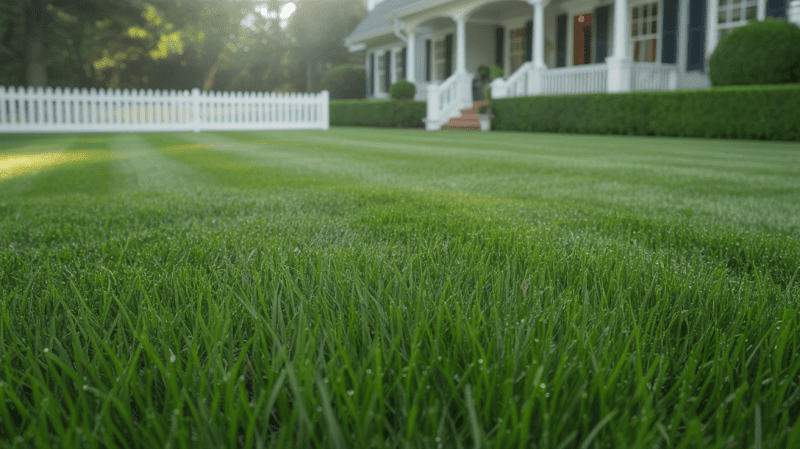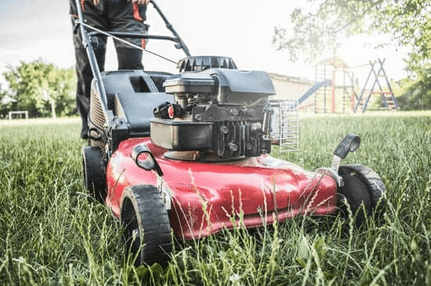Simple Solutions for Orchid Care Issues:

As an orchid enthusiast, I've faced many common orchid issues. Problems like yellowing leaves and no blooms can be tough to solve. But, with the right orchid care tips, you can fix these issues and enjoy your orchid's blooms.
Proper care is key to avoiding orchid problems. Knowing the causes of these issues helps you give your orchid the best care. In this article, I'll share my knowledge on troubleshooting orchid problems and offer solutions for orchid issues. This will help you succeed with your orchids.
Key Takeaways
- Understand the common issues faced by orchid enthusiasts
- Learn effective orchid care tips to prevent problems
- Discover solutions to common orchid issues
- Improve your orchid care skills with troubleshooting tips
- Enjoy beautiful blooms with proper care and attention
Understanding Orchids and Their Unique Needs
Knowing what orchids need is key to solving common problems. These plants can handle a lot, from lots of rain to long dry spells. However, to create a suitable home environment, you need to understand their specific needs well.
Why Orchids Require Special Care
Orchids need special care because they thrive best in certain conditions. Light, water, drainage, air circulation, humidity, and fertilizer are all important. For example, most orchids need bright, indirect light, and too much can harm them.
Basic Orchid Growing Requirements
To grow orchids well, you must know their basic needs. Here are some key things to remember:
| Factor | Description | Importance Level |
|---|---|---|
| Light | Bright, indirect light is ideal for most orchids. | High |
| Water | Don't overwater; let roots dry a bit between waterings. | High |
| Humidity | Keep the air humid, between 40-70% relative humidity. | Medium |
| Fertilizer | Feed them often, but don't overdo it. | Medium |
As a renowned orchid expert once said,
"The key to growing orchids is not just about providing the right conditions, but also about understanding their natural habitats and adapting to their needs."
Recognizing Common Orchid Problems
Spotting unhealthy orchids is the first step to fixing them. Orchids can be tricky, and knowing what's wrong is key to saving them.
Visual Signs of Unhealthy Orchids
Look out for yellow leaves, black spots, or wrinkled leaves. These signs can mean underwatering, overwatering, or pests. For example, yellowing leaves might mean too much water or light. Black spots could be a fungal infection.
Distinguishing Between Normal Growth and Problems
It's important to know the difference between normal growth and problems. Orchids naturally drop old flowers and leaves. But sudden changes can be a sign of trouble. Watching your orchid closely helps catch issues early.
When to Take Immediate Action
Some problems need quick action to avoid more damage. For example, root rot or severe pest infestations need fast attention. Here's a quick guide to help you decide:
| Symptom | Possible Cause | Action |
|---|---|---|
| Yellowing Leaves | Overwatering, Too Much Light | Adjust Watering, Provide Shade |
| Black Spots | Fungal Infection | Treat with Fungicide |
| Wrinkled Leaves | Underwatering | Increase Watering Frequency |
By staying alert and knowing common orchid problems, you can keep your plants healthy and vibrant.
Watering Issues: The Leading Cause of Orchid Decline
Watering is crucial for orchid care. Getting it wrong can harm your orchids. Both too much and too little water can cause problems.
Overwatering Symptoms and Solutions
Too much water can rot the roots, killing the orchid. Look for yellow leaves, soft roots, and a sick plant. To fix it, check the roots and change your watering schedule.
Make sure the soil isn't too wet. Let it dry a bit before watering again.
Prevention is key: Use a potting mix that drains well. Avoid water on the crown or leaves to stop rot and infections.
Underwatering Signs and Remedies
Not enough water can dry out the leaves and pseudobulbs. If you see this, water more often but don't overdo it. Check the soil moisture by feeling it with your finger. Water when it's dry.
Monitoring is crucial: Change your watering based on your home's humidity and temperature. These affect how wet the soil stays.
Developing the Perfect Watering Routine
Finding the right watering schedule is vital. Think about your orchid type, soil, humidity, and temperature. Watering once a week is a good start, but adjust as needed.
Observation and adjustment are key. Watch your orchids for signs of water problems. Change your routine as needed.
Troubleshooting Yellowing and Brown Leaves

Many orchid lovers face the problem of yellowing or brown leaves. These issues can come from aging, too much water, not enough water, or a lack of nutrients. Knowing the cause is key to fixing your orchid's health.
Natural vs. Problematic Leaf Yellowing
It's important to tell the difference between natural and problem leaf yellowing. Orchids shed old leaves as they grow. But if many leaves turn yellow at once, it might be a sign of a problem. Overwatering often causes this, leading to root rot and yellow leaves.
Treating Sunburn and Light Damage
Orchids can get sunburned, just like people. Too much direct sunlight can turn leaves yellow or brown. To fix this, change the lighting for your orchid. Move it to a spot with bright, indirect light. If the damage is bad, you might need to remove the affected leaves to protect the plant.
Addressing Nutrient Deficiencies
Nutrient shortages are a common reason for yellow leaves. Orchids need a mix of nutrients to stay healthy.
Nitrogen and Iron Issues
Lack of nitrogen can turn older leaves yellow. Iron deficiency can cause younger leaves to turn yellow between the veins. Using a balanced, water-soluble orchid fertilizer can help fix these problems.
Calcium and Magnesium Problems
Shortages in calcium and magnesium can harm leaf health, causing yellowing or browning. It's important to make sure your orchid gets a fertilizer that includes these nutrients.
By understanding why leaves turn yellow or brown, you can fix the problem. This will help your orchids stay healthy and vibrant.
Dealing with Orchid Pests and Diseases
Orchids, like many other plants, can get pests and diseases. These need to be found and treated quickly.
Common Orchid Pests and Their Treatment
Orchids face pests like scale insects, mealybugs, spider mites, and aphids. If not treated, these pests can harm the plant a lot.
Scale Insects and Mealybugs
Scale insects and mealybugs suck the plant's sap, weakening it. Isolating infected plants and treating with insecticidal soap or neem oil can control them.
Spider Mites and Aphids
Spider mites and aphids also harm orchids. Spider mites turn leaves yellow or bronze, while aphids suck sap and can spread viruses. Using insecticidal soap or neem oil can manage these pests.
| Pest | Symptoms | Treatment |
|---|---|---|
| Scale Insects | White, cottony patches on leaves and stems | Insecticidal soap or neem oil |
| Mealybugs | White, cottony masses on leaves and stems | Insecticidal soap or neem oil |
| Spider Mites | Yellowing or bronzing of leaves | Insecticidal soap or neem oil |
| Aphids | Distorted leaves, presence of aphids on new growth | Insecticidal soap or neem oil |
Fungal and Bacterial Infections
Fungal and bacterial infections can harm orchids, causing black spots and rot. Good air circulation and removing affected parts can stop disease spread.
Black Spots and Rot
Black spots and rot usually mean fungal or bacterial infections. Better air around plants and fungicide treatment can manage these problems.
Prevention and Treatment Strategies
To prevent pests and diseases, keep things clean, ensure air flow, and watch plants closely. If problems happen, isolate affected plants and use treatments like fungicides or insecticidal soap.
Solving Root Problems in Orchids

Healthy roots are key to an orchid's survival. Spotting root problems early is crucial to save the plant. Root issues can harm the plant's health, so it's important to know the signs and how to fix them.
Identifying Healthy vs. Unhealthy Roots
Healthy orchid roots are firm, white, and have a greenish tip. This shows they are growing well. Unhealthy roots are soft, mushy, or rotting. To check your orchid's roots, gently remove it from its pot and look closely. If you see decay, act fast.
Treating and Preventing Root Rot
Root rot is common in orchids, often from too much water. To fix root rot, cut off the bad roots with clean scissors. Then, repot the orchid in a medium that drains well. To stop root rot, make sure the pot drains well and don't water too much.
Repotting Techniques for Root Recovery
Repotting is key for an orchid with root problems. Be gentle with the roots to avoid more damage.
When and How to Repot
Repot your orchid when it's not in bloom. Pick a pot that's a bit bigger than the old one. Carefully remove the plant and trim dead or damaged roots before repotting.
Choosing the Right Potting Medium
Choosing the right potting medium is crucial to prevent root rot. Use a mix made for orchids, with bark, sphagnum moss, or perlite. This ensures good drainage and air for the roots.
| Potting Medium | Drainage | Aeration |
|---|---|---|
| Bark Mix | Excellent | Good |
| Sphagnum Moss | Good | Fair |
| Perlite Mix | Excellent | Excellent |
Understanding and fixing root problems can help your orchid recover and grow. Regular checks and proper care can prevent many root issues.
Why Your Orchids Aren't Blooming
It's frustrating when orchids don't bloom. These plants are famous for their beautiful flowers. When they don't bloom, it's puzzling.
Several factors affect an orchid's ability to bloom. Knowing these is key to getting your orchid to flower.
Light and Temperature Requirements for Blooming
Orchids need specific light and temperature for blooming. Most need bright, indirect light. Some also need a cooler night temperature to bloom.
"Orchids are sensitive to their environment, and meeting their light and temperature needs is crucial for blooming."
| Orchid Type | Light Requirement | Temperature Requirement |
|---|---|---|
| Phalaenopsis | Low to Medium | 65-75°F (18-24°C) |
| Dendrobium | Medium to High | 60-70°F (15-21°C) |
Fertilization Strategies to Encourage Flowers
Fertilizing orchids is crucial but must be done right. A balanced fertilizer during the growing season helps with growth and flowers.
Fertilize your orchids once a month with a balanced, water-soluble fertilizer. Use half the recommended strength to avoid root burn.
Understanding Rest Periods and Bloom Cycles
Some orchids need a rest period after blooming. They may need less water and fertilizer during this time. Knowing your orchid's bloom cycle is key to proper care.
By meeting your orchid's needs, like light, temperature, fertilization, and rest periods, you can encourage blooming.
Conclusion: Maintaining Healthy Orchids Year-Round
Keeping orchids healthy requires regular care and understanding their specific needs. By learning about common issues, you can avoid them and keep your orchids in top shape.
This guide has shared many orchid care tips. These include adjusting how often to water and fertilize, and making sure they get the right light and temperature. Following these tips helps prevent problems and keeps your orchids healthy.
Dealing with sick orchids requires a detailed approach. This includes watching for pests and diseases and acting fast when needed. With the right care, you can enjoy your orchids blooming all year.
By using the knowledge from this guide, you'll become great at keeping orchids healthy and avoiding common problems.
FAQ
Why are my orchid leaves turning yellow?
Yellow leaves can mean you're watering too much or too little. Or maybe your orchid is getting too much sun. Check how often you water and make sure it's getting the right light.
How often should I water my orchid?
Watering frequency changes based on your orchid's type, potting mix, and environment. Generally, water once a week. But always check the soil moisture first.
What is the best way to fertilize my orchid?
Use a balanced fertilizer (20-20-20) once a month. You can also try a fertilizer made just for orchids, following the directions on the label.
Why isn't my orchid blooming?
Orchids need the right light and temperature to bloom. Make sure it's getting enough light. Keep the temperature between 65-75°F at night and 75-85°F during the day.
How do I treat root rot in my orchid?
Take out the orchid and look at the roots. Cut off any rot with clean scissors or pruning shears. Then, repot it in a mix that drains well and water less to avoid more rot.
What are some common orchid pests, and how can I control them?
Pests like mealybugs, spider mites, and scale can harm your orchid. Check it often. If you find pests, use insecticidal soap or neem oil as directed.
How can I prevent orchid diseases?
Good air flow, proper watering, and a clean space help prevent diseases. Also, watch for signs of disease and treat quickly.
Can I repot my orchid at any time?
Repot when your orchid isn't blooming and the soil is breaking down. Spring and summer are best for repotting, so it can settle before winter.
How do I know if my orchid is getting enough humidity?
Orchids like humid air, 40-70% relative humidity. To increase humidity, put the pot on a water tray with pebbles or use a humidifier.
What is the ideal temperature for my orchid?
The perfect temperature varies by orchid type. Most prefer daytime temperatures of 75-85°F and cooler nights. Check your orchid's specific needs.
DISCLAIMER
This document is provided for general information purposes only and should not be relied upon as providing legal advice, technical, or specific operational guidance to the reader, whether as to the practices described in the document or the applicable legal requirements and regulations. Lawnfly.com expressly disclaims any responsibility for liability arising from or related to the use or misuse of any information in this document.



